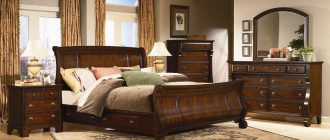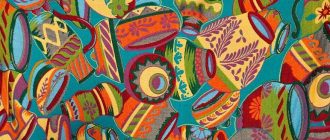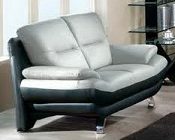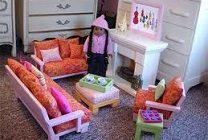A large quantity of furniture was made for the early Dutch settlers in their colonial possessions. Such pieces are often distinctive in their native designs and materials, and were often constructed with wood pegs without the use of glue, while others were copied directly from Dutch models. Small furniture centers existed in Java, where a principal trading station was situated at Batavia, in Ceylon, the Coromandel Coast and in South Africa.
Pieces brought home to Holland during the eighteenth century are found with stamped marks in the form of an “O” and “C” pierced through from beneath by a larger “V” (Verenigde Oost-Indische Compagnie), and accompanied by the year date of dispatch via ships of the (United) Dutch East India Company.
Ebony was a principal material, as well as Maba ebenus, which varies from true ebony but is accepted today as such. Teak, padouk, sappan wood which somewhat resembles Brazil wood, camphor wood, bullet wood, bloodwood, stink-wood, sandalwood, calamander and other native timbers were also utilized. Silver and base metals were fashioned into mounts for cabinet pieces, often following Japanese and Chinese patterns in hinges and lockplates. Ivory, and inlays of ivory, were especially favored in India.
Jan van Riebeck was sent out, in 1652, to found a settlement at the Cape of Good Hope, as a stopping point for shipping from the Far East. Craftsmen brought from Batavia, Ceylon and India showed particular partiality for the use of the local stinkwood, and yellow wood of the pine family. Native “oaks” and olivewood, as well as teak and satinwood, were also favored. Stinkwood, though scarce today, and regardless of a pronounced odor when freshly cut, is still regarded as the best of South African timbers for furniture-making. Somewhat resembling walnut, this wood is of a similar color, with a slightly reddish tone. Native olivewood, harder than European olive, is sometimes known as ironwood, a term often applied to exceptionally hard or heavy timbers. Ebony, satinwood and ivory were used in later work for rather reserved inlays.
Use of such woods will generally characterize furniture of the Cape Colony that was produced in typical Dutch designs, forsaking use of popular Indian and other Eastern motifs. It is well to remember, however, that various “Indian” woods were imported and used in Holland, particularly in seat furniture designed and ornamented in colonial fashions.
It is claimed that “Burgomaster” chairs, which in recent times have become desired specimens in England, America and Germany, originated in this colony during the time of van Riebeck-a slightly prejudiced tradition. However, around the turn of the seventeenth century the form became popular in Holland, and was copied, along with other styles of seat furniture and tables derived from Africa and the East, until the middle of the eighteenth century when rococo elements were introduced in these frames.
Further north along the east coast of Africa, in Kenya, furniture was also produced, allied to that of the Cape Colony. From the late seventeenth century, designs executed in Kenya were influenced by Dutch, Portuguese, and Portuguese East Indian work, and later also by impetus received from England.
The “kidney bean” cabochon, a popular carved motif in furniture made throughout the Netherlands, and in Pennsylvania, also appears in African colonial work where it has been associated with the native korosho nut.
Importance of Dutch trade with the Far East is responsible for a large amount of the lacquer furniture executed there for the European market, as well as for the reception in Europe of typically Japanese and Chinese furniture during the seventeenth and eighteenth centuries. Much of that which was specially made along European lines, and is believed to have been copied from English designs, was made to Dutch orders and after Dutch models.
Principal Dutch factories were maintained at Canton in China, and at Deshima in Japan. The Hollanders were the only Europeans permitted to maintain residence in the latter islands after 1638.
Records exist in Amsterdam of Oriental artists in lacquer (Japanish Verlakker) working there in the late seventeenth and eighteenth centuries. The inferior cabinetwork, apparent in many of the exports from China, produced complaints which finally resulted in the dispatch of a Dutch joiner to supervise such matters. In contrast to suppositions that English furniture was sent to China for decorating in lacquer, some few unfinished pieces of Dutch furniture are recorded as having been handled in this manner.





